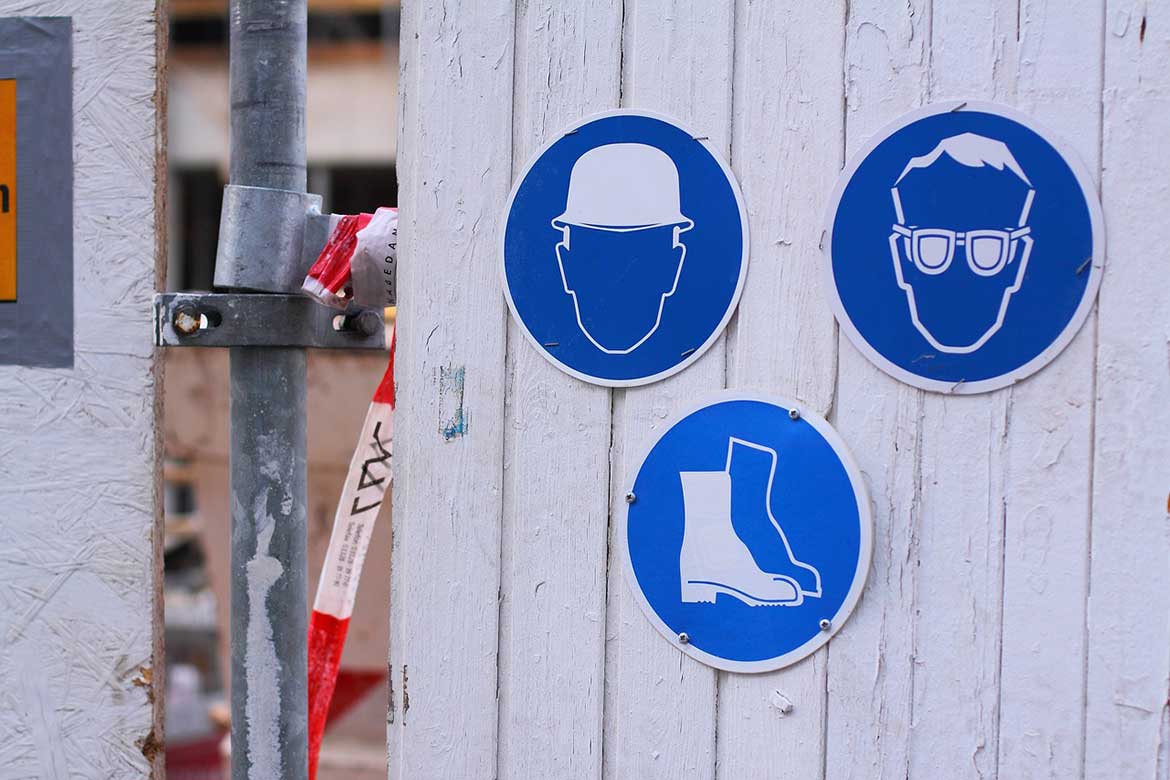3rd January, 2024
What Is Health And Safety?
Health and safety is about preventing harm. It means keeping people safe and healthy. In this introduction to health and safety, we'll look at the need for health and safety, and the moral, legal and financial arguments for health and safety at work.

Health and safety at work isn't just a legal requirement. It's a human requirement. And a business requirement.
Even if there were no health and safety laws or employer responsibilities, a business couldn't survive with bad health and safety.
But what is health and safety?
Let's discover health and safety - and why it is a vital part of a successful business.
Preventing harm
Health and safety is a diverse subject, but essentially, it is based on one core principle - preventing harm.
When you talk about health and safety, look for hazards, assess risks, or put controls in place, you do it to prevent harm.
When you keep people safe, you stop them from getting hurt in accidents. That's preventing harm.
When you keep people healthy, you stop them from getting illnesses and diseases. That's preventing harm.

Health and safety can sometimes get bad press, with people focusing on regulations, red tape, court cases and fines. People can use it as a fear tactic, or as an excuse or a punishment.
But the practice of health and safety isn't really about any of that, it's about protecting people.
It's a safety net, a better way, a safer option.
Yes, there are health and safety regulations to comply with. Rules that must be obeyed. But even without regulations, health and safety is the right thing to do.
We all owe each other 'reasonable care'. Nobody wants to get hurt. Nobody wants to become ill. Causing harm to someone is wrong on a human level - and something that should be avoided.
Health and safety at work
At work, the subject of health and safety affects every workplace in every industry. Some more than others.

But no matter where you work - or who you work for - you need health and safety. Because you should be kept safe. Employees, workers and visitors must be protected from harm. No job should take your life, or your health, away from you.
All workers have a right to work in places where risks to their health and safety are properly controlled. Health and safety is about stopping you getting hurt at work or ill through work.
Health and safety is everyone's duty, but at work, the overall responsibility for managing health and safety falls on employers.
Employers have many legal health and safety responsibilities when it comes to creating a safe workplace. Ultimately, employers tell workers what to do and how to do it. They control the work and have the most influence on managing health and safety.
Employees have health and safety responsibilities too, but this is mostly to comply with the rules and procedures put in place by employers.
Safety first?
Popular health and safety phrases include "safety first" and "safety always". And the health in 'health and safety' can often be an afterthought.
But it shouldn't be.
Health is just as important as safety. In fact, some health risks can have a much bigger impact than safety failures.
Safety hazards might seem more important because they are an instant threat. For example, imagine falling from a height or getting run over by a lorry.

Ouch!
These are both big safety risks that people need to be protected from. They could be fatal. And failure to control safety risks will impact your accident statistics too.
So safety risks are often prioritised.
- The accidents are immediate
- The injuries are visible
- The consequences are now
Health risks are the opposite.
Health hazards often can't be seen, like deadly dust or toxic fumes. They might be invisible. And even if the hazard is visible, the injuries are hidden. Like slowly losing your grip, your hearing, or your lung capacity.
Health hazards probably won't make you sick straight away. You might not even know they are there - until it's too late.
The consequences are in the future.
But in 2022, according to HSE statistics, there were 123 workers killed at work from safety hazards like falls and contact with machinery. In comparison, there were over 13,000 deaths linked to past exposures to health hazards at work.
As you can see from the statistics, both health and safety issues need to be addressed. Not just to prevent deaths, but to keep workers healthy and prevent harm.
Moral, legal, and financial
There are moral, legal, and financial arguments for health and safety. Often a combination of all three applies.
The employer-employee relationship is primarily a financial exchange, the employer pays in exchange for the skills of the worker. The worker provides their labour in return for payment for their time and/or efforts.

People go to work to earn money to live. Not to die or get hurt.
Morally, it would be wrong for employers to expect workers to put themselves at risk. No one is looking to exchange their life or health for a day's work.
The legal arguments for health and safety start with a duty of care and are further enforced through health and safety legislation.
We cover this in more detail in the legal health and safety responsibilities of employers. While many regulations apply to health and safety, you can start by assessing risks.
- Check which health and safety hazards are present.
- Decide who might be harmed, and how they could be harmed.
- Put in place precautions to prevent or control risks, and protect people from harm.
- Record and communicate your findings, so everyone knows what to do.
- Review and update as necessary, if things change or improvements are needed.
Failing to comply with legal responsibilities can lead to fines and accidents - which cost money and damage the business's (and employer's) reputation.

Accidents and health problems cost money.
Preventing them with good health and safety can save you money!
If someone is ill or gets hurt, it can have a big financial impact and cause a dent in productivity.
Costs include:
- Time off
- Shutdowns
- Investigations
- Delays
- Damage
- Sick pay
- Recruiting new staff
- Prosecutions
- Fines
Businesses rely on their workforce for productivity and to deliver contracts and fulfil orders.
Health and safety is about protecting workers and, in turn, protecting businesses. A safe and healthy workforce gives any business a better chance of commercial success and long-term stability.
Remember, health and safety is about preventing harm. If you focus on that core aim, you won't go far wrong. Every piece of health and safety regulation has that core aim.
It may require training to be taken, or documents to be produced or might place limits on exposure or the type of work that can be carried out. But the reason behind any health and safety decision, law or rule, is to prevent harm.
Just getting started? Find out more about the legal health and safety responsibilities of employers and those of employees.
This article was written by Emma at HASpod. Emma has over 10 years experience in health and safety and BSc (Hons) Construction Management. She is NEBOSH qualified and Tech IOSH.
Better health and safety...
We are here to help you and your business put safety in everything.
Learn MoreRecent posts like this...

The 5 Health And Safety Signs And Their Meanings
There are 5 types of health and safety signs, and they all mean different things. How do you know which type of sign is which? Health and safety signs send their message through shape and colour. Once you know what you are looking for, you can quickly understand the exact meaning of the sign.
Read Post
9 Reasons Health And Safety Is Important For Your Business
Is health and safety important? You can bet your life it is. If you don't take health and safety seriously you are gambling with your life and the lives of others. Health and safety benefits your team and your business. Here are 9 reasons why health and safety is important for your business.
Read Post
Reporting Accidents, Injuries And Incidents At Work
Who should you report accidents to at work? In this blog post, we look at reporting accidents internally, including RIDDOR, the accident book, and internal reporting systems, and escalating accident reports externally if needed.
Read Post